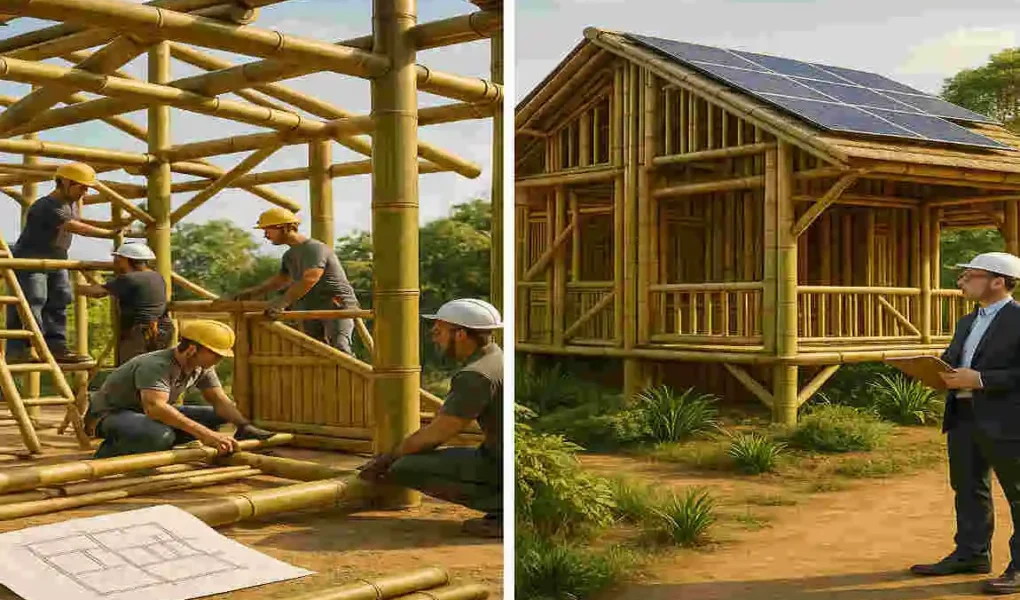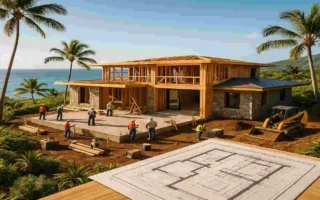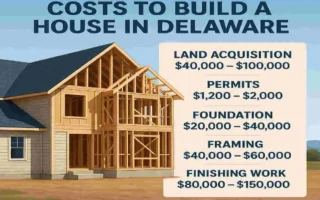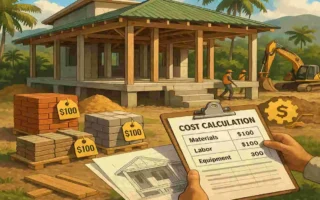Imagine living in a home that’s not just sturdy and beautiful but also kind to the planet. In recent years, more people are turning to sustainable building materials to create eco-friendly living spaces. Bamboo, often seen as a simple plant, is stepping into the spotlight as a game-changer in house construction.
You might be wondering: can you build a house out of bamboo? The answer is a resounding yes! Bamboo isn’t just for pandas or garden fences—it’s a versatile material that’s been used for centuries in homes around the world. It’s strong, flexible, and grows incredibly fast, making it a wise choice for anyone looking to build green.
What Is Bamboo? Understanding the Material
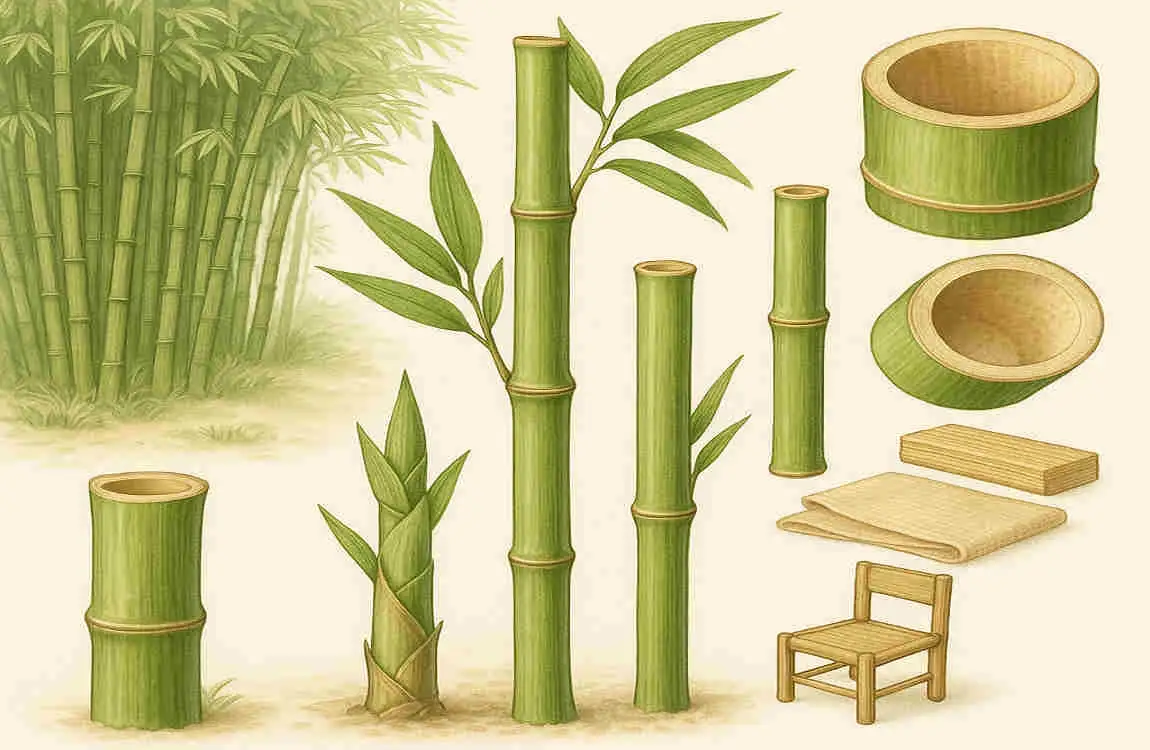
Bamboo might look like a skinny tree, but it’s actually a type of grass. It grows in tropical and subtropical regions, shooting up faster than almost any other plant on Earth. When we talk about building, not all bamboo is the same—some types are perfect for structures, while others are better for crafts.
Definition and Types of Bamboo Used in Construction
At its core, bamboo is a woody grass with hollow stems called culms. For construction, builders often choose species like Guadua or Dendrocalamus, which are thick and tough. These types can reach heights of 30 meters or more, providing long, straight poles ideal for framing.
Picture this: you’re walking through a bamboo forest, and these giants sway in the wind without breaking. That’s the kind of resilience we’re harnessing for homes. If you’re new to this, start by researching local varieties—some are native to Asia, while others thrive in Latin America.
Key Characteristics: Strength, Flexibility, Growth Rate
What makes bamboo so special? Its strength-to-weight ratio rivals steel, meaning it’s powerful without being heavy. Plus, it’s flexible, which helps it bend during storms instead of snapping.
Bamboo grows at an astonishing rate—up to 3 feet per day in the right conditions! This rapid renewal means harvesting doesn’t deplete resources like chopping down trees does. Imagine planting a crop that matures in 3-5 years versus waiting decades for timber.
Environmental Benefits Over Traditional Materials
Switching to bamboo cuts down on deforestation. Unlike hardwood, bamboo regenerates from its roots after cutting, so the plant keeps going. It also absorbs more carbon dioxide than many trees, helping fight climate change.
Compared to concrete or steel, bamboo requires less energy to produce and transport. You’re not just building a house; you’re contributing to a healthier planet. How does that sound for your next project?
Common Uses of Bamboo in Building Around the World
From Bali’s traditional huts to modern eco-resorts in Costa Rica, bamboo shines in global architecture. In Asia, it’s used for entire villages, while in the West, it’s popping up in sustainable homes and even skyscrapers.
Think of bamboo bridges in China or earthquake-resistant houses in Colombia. These examples show bamboo’s versatility—it’s not just exotic; it’s practical for everyday building.
Why Build a House Out of Bamboo?
Building with bamboo isn’t just a trend—it’s a smart move for the future. As we face environmental challenges, materials like bamboo offer real solutions. Let’s break down why you might choose it over bricks or wood.
Sustainability and Environmental Advantages
Bamboo is a superstar for the environment. It grows without pesticides and replenishes soil, unlike resource-heavy crops. By choosing bamboo, you’re reducing your carbon footprint—each pole sequesters CO2 during growth.
Picture your home as a living part of nature. Doesn’t that appeal to you? It’s a way to live lightly on the Earth.
Cost-Effectiveness Compared to Conventional Housing
Money talks, right? Bamboo houses can cost 20-30% less than traditional ones because the material is abundant and cheap in many areas. Labor might be simpler, too, which could cut down on build time.
If you’re on a budget, bamboo lets you build house for less cash. Imagine saving thousands—what would you do with the extra?
Durability and Strength of Bamboo Structures
Don’t underestimate bamboo’s toughness. Appropriately treated, it lasts decades and withstands earthquakes better than rigid materials. Its flexibility absorbs shocks, making it ideal for disaster-prone areas.
Unique Aesthetic Appeal and Design Flexibility
Bamboo brings a warm, natural vibe to any home. Its curves allow for creative designs, from curved roofs to open-air layouts. You can blend modern and rustic styles effortlessly.
Want a house that stands out? Bamboo’s texture and color add that wow factor.
Cultural and Historical Significance of Bamboo Housing
Bamboo has deep roots in cultures worldwide. In Japan, it’s a symbol of resilience; in India, it’s woven into daily life. Building with it connects you to ancient traditions while embracing modern sustainability.
Here’s a quick list of bamboo’s standout benefits to inspire you:
- Eco-friendly renewal: Harvest without harming the ecosystem.
- Affordable sourcing: Often locally available, reducing transport costs.
- Versatile applications: From floors to furniture.
- Health perks: Natural insulation for better air quality.
Can You Build a House Out of Bamboo? Legality and Practicality
So, back to the big question: can you build a house out of bamboo? Absolutely, but it’s not without hurdles. Let’s get honest about what’s possible.
Overview of Building Codes and Regulations Involving Bamboo
In many places, building codes are catching up to bamboo. Countries like Colombia have standards, but in the U.S., it’s often treated like wood—check local rules. You might need certifications to prove it’s safe.
Don’t worry; organizations like the International Bamboo and Rattan Organization offer guidelines. Research your area’s laws to stay compliant.
Challenges and Limitations (Climate, Pest Control)
Bamboo loves warm, humid spots, but can rot in wet climates without treatment. Pests like termites are a risk, so prevention is key.
Is your location rainy? You might need extra waterproofing. Think ahead to avoid headaches.
Success Stories and Examples from Different Countries
Look at Bali’s Green Village, where bamboo homes blend luxury and nature. Or Ecuador’s bamboo schools, built quickly after disasters. These prove that bamboo works in real life.
What if you visited one? It could spark ideas for your build.
How to Assess If a Bamboo House Suits Your Location and Needs
Start by evaluating your climate, soil, and lifestyle. Do you want off-grid living? Bamboo fits perfectly. Consult experts to see if it’s a match—better safe than sorry.
Planning Your Bamboo House Construction
Planning is where the magic starts. Without a solid blueprint, your bamboo dream could turn into a nightmare. Let’s map this out together.
Initial Considerations: Purpose, Size, Budget
Ask yourself: What’s the house for—a family home, vacation spot, or tiny retreat? Determine the size based on your needs, then establish a budget—factor in materials, labor, and permits.
You got this—jot down your vision to keep things focused.
Designing with Bamboo: Architectural Styles and Plans Available
Bamboo suits styles from tropical bungalows to modern minimalism. Free online plans exist, or hire an architect specializing in sustainable designs.
Imagine sketching your layout—curved walls for airflow, open spaces for light. Fun, right?
Choosing Between Prefabricated Bamboo Panels vs. the Traditional Pole Method
Prefab panels are quick and easy, like building with Lego. Traditional poles offer authenticity but require more skill. Weigh speed versus charm for your project.
Finding Local Suppliers and Bamboo Species Best for Construction
Search for sustainable harvesters near you. Opt for thick-culmed species like Moso for strength. Build relationships with suppliers—they’ll share tips.
Preparing Bamboo for Construction
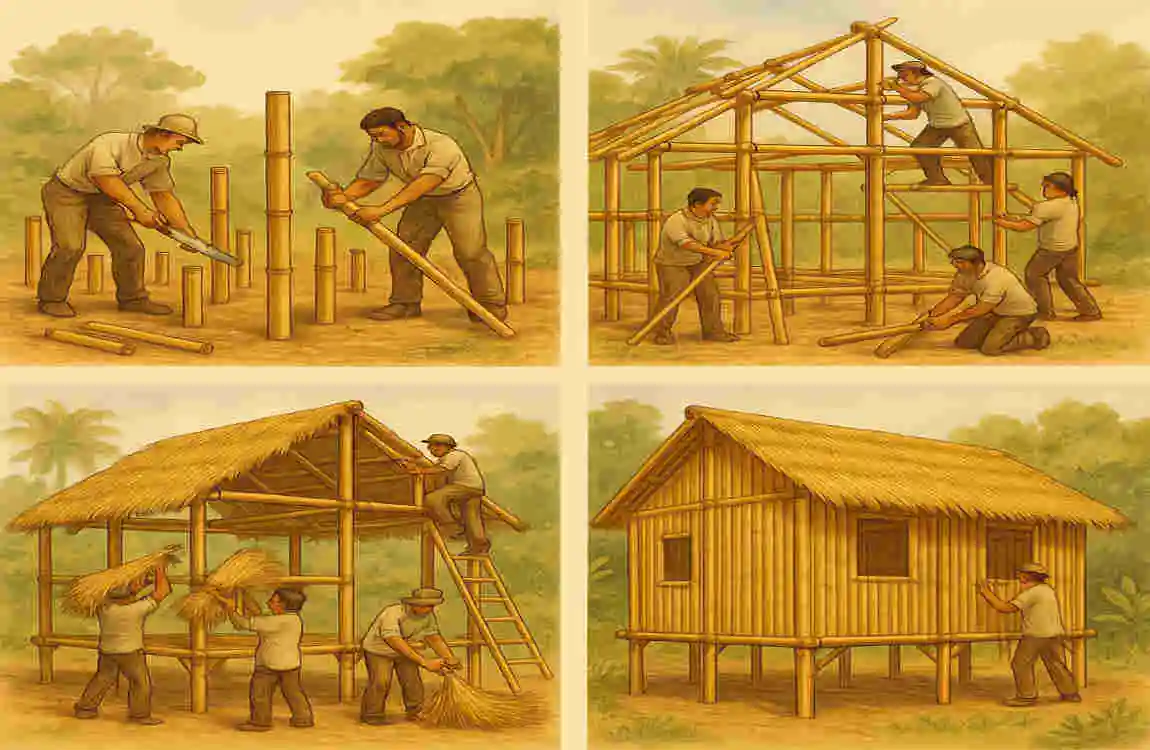
Raw bamboo needs prep to become building-ready. This step ensures your house stands the test of time.
Harvesting Techniques for Mature Bamboo
Harvest at 3-5 years old, when poles are strongest. Cut at the base during dry seasons to avoid rot. Use sharp tools for clean cuts.
You’re essentially farming your materials—how empowering is that?
Treatment Methods to Prevent Pests, Mold, and Decay
Soak poles in borax solutions or use heat treatments to kill bugs. Apply sealants for mold resistance. These steps are crucial for longevity.
Seasoning and Curing Bamboo Poles
Dry poles in shaded areas for months to reduce moisture. This prevents cracking later. Patience here pays off.
Tools and Equipment Needed for Bamboo Preparation
You’ll need basics like saws, drills, and drying racks. For a smooth process, follow this numbered list of essential tools:
- Pruning saw: For clean harvesting cuts.
- Bamboo splitter: To divide poles evenly.
- Treatment tanks: For soaking in preservatives.
- Measuring tape: Ensure precise lengths.
- Protective gear: Gloves and masks for safety.
Foundational Work and Site Preparation
A strong foundation keeps your bamboo house stable. Skip this, and everything wobbles.
Selecting an Appropriate Site for Bamboo Construction
Choose elevated, well-drained land to avoid flooding. Test soil for stability—bamboo needs firm ground.
Foundation Types Suitable for Bamboo Houses (Concrete, Stone, Wood)
Concrete slabs are popular for their durability. Stone piers work in rocky areas, while wooden posts suit eco-purists.
Ground Treatment to Prevent Moisture Damage
Clear vegetation and add gravel for drainage. Apply barriers to block termites.
Laying Out the Foundation with Bamboo Framing in Mind
Mark your layout, then pour or set the base. Align it for bamboo poles to fit perfectly.
Bamboo Framing and Structural Assembly
Now we’re building! This is where bamboo’s strength shines.
Joining Techniques: Lashing, Pegging, Bolting Bamboo Poles
Lash with ropes for flexibility, peg with wooden dowels, or bolt for modern strength—mix methods for best results.
Building Load-Bearing Walls and Roof Frames Using Bamboo
Erect poles vertically for walls, then add horizontal braces. For roofs, create trusses that distribute weight.
Incorporating Bamboo Beams, Trusses, and Columns
Use thick culms as columns—they support tons. Beams add horizontal stability.
Reinforcement Methods for Stability and Safety
Add metal connectors or concrete fills for extra toughness. Test for wobbles before proceeding.
Adding Walls, Roof, and Finishing Touches
Time to enclose your space and make it livable.
Using Bamboo Matting, Woven Panels, or Other Materials for Walls
Weave mats for breathable walls or use of house solar panel for insulation. Combine with mud for a natural finish.
Roofing Options Compatible with Bamboo Structures
Thatch or metal sheets pair well. Bamboo shingles offer a seamless look.
Waterproofing and Insulating the Bamboo House
Seal joints with natural resins. Add insulation like bamboo fiber for comfort.
Doors, Windows, and Ventilation: Bamboo Design Tips
Frame openings with bamboo. Opt for sliding doors to maximize airflow—perfect for tropical vibes.
Interior Design and Furnishings Using Bamboo
Inside, bamboo creates a cozy haven.
Bamboo Flooring, Furniture, and Cabinetry Ideas
Lay split bamboo house floors for a smooth feel: craft tables and shelves from poles.
Decorating with Natural Finishes to Enhance Bamboo Aesthetics
Use oils to highlight grains. Add plants for a jungle retreat.
Incorporating Other Sustainable Materials with Bamboo Interiors
Mix in cork or recycled fabrics. It keeps things green.
Maintenance and Care Tips for Bamboo Interiors
Dust regularly and re-oil annually. Simple habits keep it fresh.
Maintenance and Longevity of Bamboo Houses
Your bamboo house isn’t set-it-and-forget-it—care extends its life.
Regular Inspection Practices to Prevent Deterioration
Check for cracks monthly. Catch issues early.
Treating Bamboo to Protect Against Weather and Insects
Reapply sealants yearly. Use natural repellents for bugs.
Repair Techniques for Damaged Bamboo Elements
Replace split poles easily—patch with similar materials.
Expected Lifespan and How to Extend It
Well-maintained bamboo lasts 20-50 years. Proper care pushes it further.
Advantages and Disadvantages of Bamboo Houses
Bamboo has ups and downs—let’s weigh them.
Pros: Eco-Friendliness, Cost, Speed of Construction, Unique Look
It’s green, cheap, quick to build, and stunning.
Cons: Vulnerability to Moisture, Code Restrictions, Skilled Labor Requirement
Moisture can damage it, codes vary, and you need know-how.
How to Mitigate Potential Downsides
Treat for weather, research laws, and train with experts.
Here’s a table summarizing the key pros and cons:
Aspect Pros Cons Mitigation Tips
Environment: Highly sustainable, fast-growing. Potential for overharvesting if not managed. Source from certified farms
Cost: Low material and build expenses. Initial treatments add up. Buy in bulk, DIY where possible.
Durability , Flexible in disasters , Prone to rot and pests , Regular sealing and inspections
Aesthetics: Natural, customizable. It may look “rustic” to some. Blend with modern elements.
Construction: Quick assembly. Needs skilled workers. Hire trained bamboo builders.

